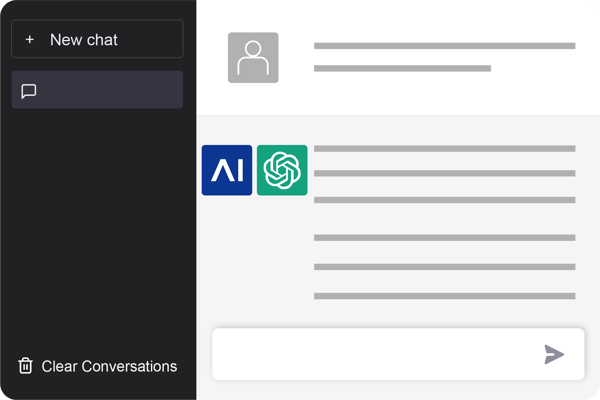Summary:
The benefits of automation are real, but the costs of doing it poorly are even more so. Since many companies often end up pursuing multiple automation projects simultaneously, it’s easy to fall into common traps or focus on individual projects while missing the big picture. Most importantly, automation simply automates existing processes, it doesn’t fix bad ones so garbage in, garbage out. Gartner identified ten commonly made mistakes to avoid and building on that, we’re going to look at them in the context of Conversational AI (CAI) and customer service.
Mistake 1: Being Obsessed with a Single Technology
It’s easy to fall in love with a single technology and want to exploit it to its maximum potential. However, with integration being standard in today’s software, it’s critical to remember the idea of better together.
Automating customer service requires the careful orchestration of backend integrations, different languages, voice, and digital service channels, and more. Instead of relying on a single technology, adopt a technology stack that lets you orchestrate all of these components based on the use case.
Example: Cognigy.AI integrates not just with typical CCaaS and CRM systems for example, but also allows you to use its own, or other NLUs. So if you’re already on IBM Watson, DialogFlow or Lex, you can keep the same NLU while upgrading to a better CAI solution.
Tip: Aim for the best individual technology and solutions first, even on a granular level like NLU. Then build a best-of-breed solution to your individual needs.
Mistake 2: Assuming you can Exclude IT
Low and no-code tools do indeed obviate the need for sustained IT involvement such as maintaining your CAI, creating new flows and intents et cetera. However, zooming out to the big picture, it’s key to involve IT (and brownie points if you come to them first) who understand the plumbing so to say. Business users usually lack an in-depth understanding of how data is handled, what other systems are involved (that customer service may not use or be aware of), and all the dependencies.
Example: Your CRM is a key foundational piece of your company, used throughout the organization. When wanting to integrate with a CAI solution to identify and verify customers and perform transactions such as changing records, it may have unintended consequences for users in other departments or with existing workflows and integrations outside your contact center. What happens when your CAI process makes changes to a CRM record at the same time as another user?
Tip: Involve IT from the beginning. It will speed up the process long-term and you’ll gain brownie points for asking them for help versus them finding out later.

Mistake 3: Believing Automation is Always the Solution
As the saying goes, when all you have is a hammer, everything looks like a nail. Automating processes in your contact center can be extremely helpful and indeed lead to those fabled efficiencies and KPI improvements you’ve read about. However, at times the underlying processes themselves have to be fixed first, or better yet – the reason customers are calling in the first place.
Example: CAI enables customers to easily return or exchange items via voice and text channels, so you launch this to reduce support requests. Yet, the same volume will continue (just handled by CAI) if there’s an underlying problem in say, your product description on the website, which is leading to the issue in the first place. Understanding root causes and not automating for its own sake is a best practice to be ignored at your peril.
Tip: Analyze the processes behind what you want to automate first, the root causes that require or start those processes, and whether the entire or part of the solution requires other changes first.
Mistake 4: Not Including all Relevant Stakeholders
Automation by nature means turning a wholly or manual process into a seamless flow, which in contact centers will entail connecting multiple systems and thus touching multiple areas of responsibility. Stakeholders may include IT, the CRM owner, Change Management, and even UX.
Example: Your new CAI solution encompasses both voice and text, meaning that in chat, it’s important to ensure it matches your branding guidelines as well as the tone of voice.
Tip: Identify and include all relevant stakeholders before you begin.
Mistake 5: Speeding through the Testing Phase
Software and automation excel at carrying out repetitive tasks exactly as instructed, but that’s the catch, they will do exactly as told whether correct or incorrect. This can lead to amazing results or data disasters.
Example: CAI is frequently integrated with a CRM such as Salesforce. Especially in customized environments where field names, types, etc. can change or are non-standard, reading and writing data can be tricky, especially as a business user in a low-code environment who doesn’t have the full picture.
Tip: Testing is key. Begin by getting real user input in text and voice form from outside your core team. The results will surprise you. Build, test, measure, fine-tune and finally release to a limited subset of customers and gather real-world experience. Examine not just the automation process but also data integrity in all connected systems.
Key Takeaways:
Automation opportunities abound as do their benefits. Keeping these common pitfalls in mind will help you shorten your time to value and strengthen the case for further projects. As Gartner noted, failure can be typically traced to mistakes in three areas: approach, implementation, and impact. In the second part, we will look at the last five mistakes, which are commonly made in automation when implementing CAI projects.

.png?width=60&height=60&name=AI%20Copilot%20logo%20(mega%20menu).png)




.png?width=600&height=600&name=Knowledge%20AI%20Feature%20image%20(2).png)










.png)



